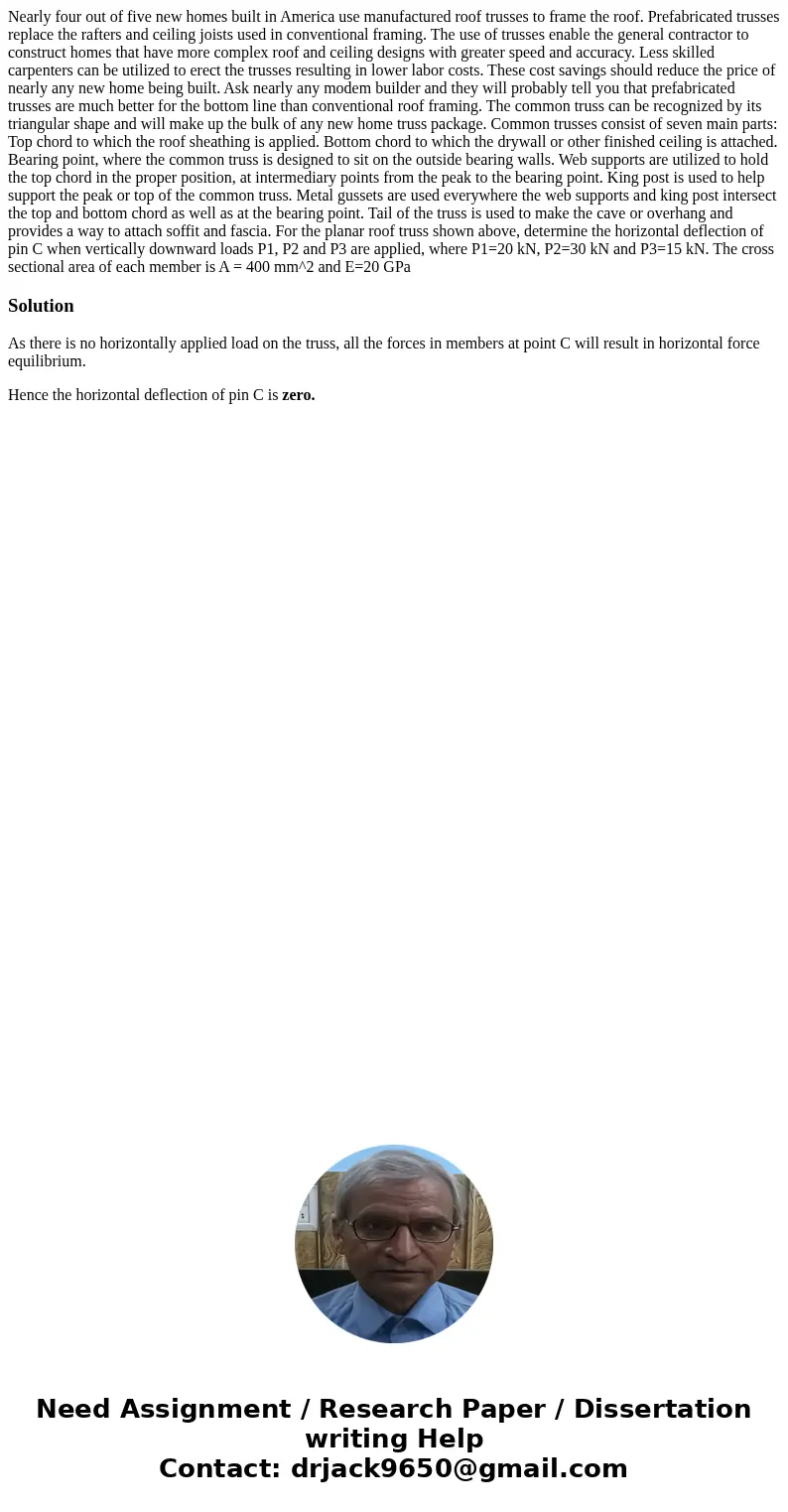Nearly four out of five new homes built in America use manuf
Nearly four out of five new homes built in America use manufactured roof trusses to frame the roof. Prefabricated trusses replace the rafters and ceiling joists used in conventional framing. The use of trusses enable the general contractor to construct homes that have more complex roof and ceiling designs with greater speed and accuracy. Less skilled carpenters can be utilized to erect the trusses resulting in lower labor costs. These cost savings should reduce the price of nearly any new home being built. Ask nearly any modem builder and they will probably tell you that prefabricated trusses are much better for the bottom line than conventional roof framing. The common truss can be recognized by its triangular shape and will make up the bulk of any new home truss package. Common trusses consist of seven main parts: Top chord to which the roof sheathing is applied. Bottom chord to which the drywall or other finished ceiling is attached. Bearing point, where the common truss is designed to sit on the outside bearing walls. Web supports are utilized to hold the top chord in the proper position, at intermediary points from the peak to the bearing point. King post is used to help support the peak or top of the common truss. Metal gussets are used everywhere the web supports and king post intersect the top and bottom chord as well as at the bearing point. Tail of the truss is used to make the cave or overhang and provides a way to attach soffit and fascia. For the planar roof truss shown above, determine the horizontal deflection of pin C when vertically downward loads P1, P2 and P3 are applied, where P1=20 kN, P2=30 kN and P3=15 kN. The cross sectional area of each member is A = 400 mm^2 and E=20 GPa
Solution
As there is no horizontally applied load on the truss, all the forces in members at point C will result in horizontal force equilibrium.
Hence the horizontal deflection of pin C is zero.

 Homework Sourse
Homework Sourse